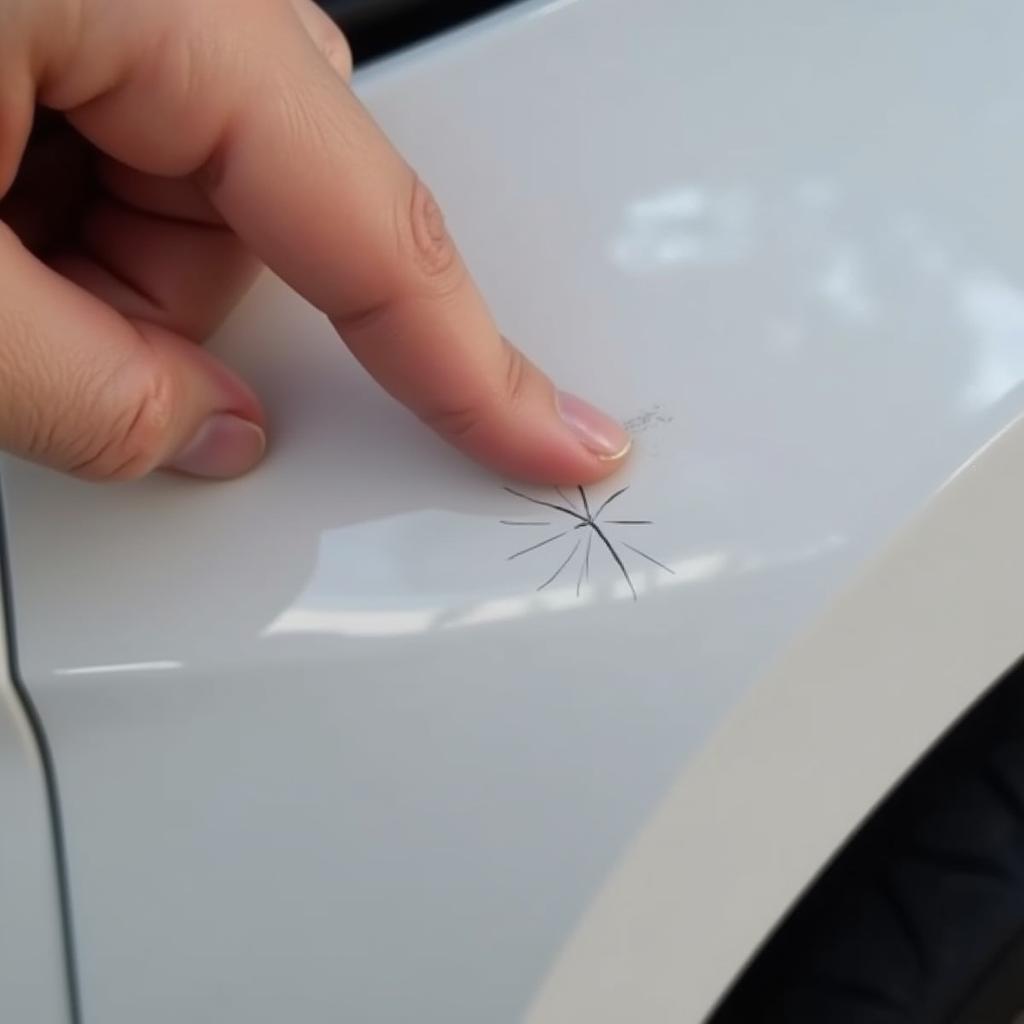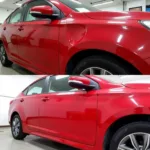Scuffs and scratches are an unfortunate reality of car ownership. Whether it’s a rogue shopping cart, a careless parker, or a close encounter with a shrub, those annoying little marks can detract from your car’s appearance. Fortunately, how to repair car paint scuffs doesn’t always require a costly trip to the body shop. With a few simple techniques and the right products, you can learn how to repair paint scuffs on car and restore your car’s finish to its former glory.
Identifying the Severity of the Scuff
The first step in repairing a paint scuff is determining how deep it is. A light scuff will only affect the clear coat, while a deeper scuff might penetrate the base coat or even the primer. Run your fingernail lightly across the scuff. If your nail catches, it indicates a deeper scuff requiring more involved repair. If your nail glides smoothly, it’s likely a clear coat scuff, which can often be addressed with a simple polishing compound.
Repairing Light Clear Coat Scuffs
For minor clear coat scuffs, a polishing compound and a microfiber cloth are your best friends. Apply a small amount of polishing compound to the cloth and rub it gently onto the scuffed area using circular motions. Work patiently, applying even pressure, and gradually the scuff should disappear. Once the scuff is gone, wipe the area clean with a fresh microfiber cloth.
What if the scuff is a little more stubborn? A rubbing compound, slightly more abrasive than a polishing compound, can be used before polishing. Remember, less is more. Start with a small amount of rubbing compound and increase gradually if necessary. Over-aggressiveness can damage the clear coat further.
Dealing with Deeper Scuffs: Touch-Up Paint and Primer
Deeper scuffs that penetrate the base coat require touch-up paint. Find your car’s exact paint code, usually located on a sticker inside the driver’s side doorjamb or in the owner’s manual. Using a fine-tipped paint brush or a touch-up pen, carefully apply a thin layer of touch-up paint directly to the scuff. Let it dry completely before applying a second coat, if needed.
If the scuff reaches the primer, you’ll need to apply primer before the touch-up paint. Use a fine-tipped brush to apply a thin layer of automotive primer, allowing it to dry thoroughly before applying the touch-up paint. “When working with primer and touch-up paint, patience is key,” advises John Smith, a seasoned auto body specialist. “Applying thin, even coats will yield the best results and prevent unsightly blobs.”
Wet Sanding and Polishing for a Seamless Finish
For repair paint scuffs car requiring touch-up paint or primer, wet sanding and polishing will create a smooth, even finish. Use very fine-grit sandpaper (2000-grit or higher) soaked in soapy water to gently level the repaired area. Follow this up with polishing compound and then a final coat of wax for a pristine finish.
repairing and painting rubber car bumpers a recomended repair can be addressed using similar techniques.
When to Seek Professional Help
While many scuffs can be tackled DIY, some situations require professional expertise. Deep gouges, large areas of damage, or damage to complex body panels are best left to the professionals. “Don’t hesitate to consult an expert if you’re unsure,” recommends Maria Garcia, a certified automotive paint technician. “Trying to fix a complex repair yourself could lead to more costly repairs down the line.”
How to prevent paint scuffs in the first place?
Parking strategically, avoiding tight spaces, and using protective films can help minimize the risk of scuffs. Regular waxing provides an added layer of protection, making it easier to repair car paint scuffs.
In conclusion, repairing paint scuffs on your car can be a surprisingly straightforward process. By understanding the severity of the scuff and employing the right techniques, you can often restore your car’s finish yourself, saving time and money. Remember, how to repair scuffs on car paint is a skill that improves with practice, so don’t be afraid to give it a try!
FAQ
- What’s the difference between rubbing compound and polishing compound?
- Can I use household cleaners to remove paint scuffs?
- How long does touch-up paint take to dry?
- Where can I find my car’s paint code?
- What grit sandpaper should I use for wet sanding?
- How often should I wax my car?
- Is it necessary to use primer for all scuffs?
Need more help? Contact us via WhatsApp: +1(641)206-8880, or Email: [email protected]. We have a 24/7 customer support team ready to assist you.



